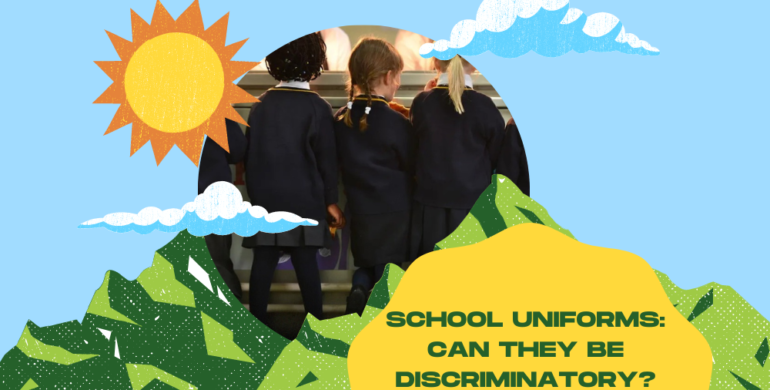School Uniforms: Can they be discriminatory?
When I was a kid, I did a lot of school hopping around the city, and as I did that I went through my fair share of school uniforms.
I was told that we wore uniforms as a measure to bring the students under the same socio-economic umbrella. While I can acknowledge that it did, in fact, do that, it also strongly enforced gender stereotypes.
The uniform often does all it can in its power to point out the differences between boys and girls. There are ‘masculine’ and ‘feminine’ traits that the uniform imposes on the student. It teaches you to behave a certain way that conforms to the nature of your assumed gender identity.
As children, the uniform also enforced a certain “model” student.
In one school, we were taught that the ideal girl student had neatly braided hair, a buttoned-up shirt, a tie that lay in the center of her chest, a fit that hid her breasts so she wouldn’t attract attention through her shirt, a skirt which couldn’t be too short or too long, (if she had a big butt, well tough luck), knee-high socks to cover her legs and…her shoes had to be shiny at all costs. I’m exhausted just recalling the jumble.
I even remember that in one of my schools, the sports uniform originally had shorts for girls. But that really didn’t last too long, the following year a flap was added to turn them into “skorts”, a trending trick most schools adopted to ensure we looked like girls.
Was the added flap functionally necessary?
Personally, I was always picked on by school teachers because I had curly hair. They called it messy and too wild for the dress code.
I remember, one day, I came bouncing happily into school with a new short sleek bob haircut. I was extremely pleased with myself because I thought I finally looked neat.
But soon after, I noticed everyone’s eyes on me, including the teachers, while I walked into the assembly hall. After the usual prayers, all the boys were asked to leave. I thought it was going to be another lecture on periods.
Boy, was I wrong?
My name was called out by the headmistress to come on stage, and I was taken aback as I climbed the steps to the podium.
In front of all the girls in school I was called out for my haircut, it was apparently “too cool” and was attracting attention. Then one by one she asked the students if my haircut was appropriate. Throughout the day every teacher thought it was their duty to shame me and use me as an example for other students.
I was just a child and yet, this was my first experience with, “She’s asking for it.”
My example is just my own experience but the truth is, in the bigger picture, there are other problematic consequences as well.
Dress codes in schools only exist for men and women and remain non-inclusive to the LGBTQIA+ community. Uniforms uphold long-term gender norms, which leaves the person feeling trapped, with no place for their true identities.
Most classes are divided into two genders, male and female. From our school uniforms to seating arrangements, to the school assembly to the washrooms, this binary expression does not acknowledge the existence of transgender and other gendered persons. It can impact the mental health and well-being of such students to a great extent, resulting in high school dropout rates.
Additionally, in my observations, boys in schools were not allowed to grow their hair or wear it the way they wanted to. Honestly, quite often, I could never tell them apart because they all had the same haircut. In most schools, boys wore shorts while younger and once they turned 13 they were made to man up and wear the pants. Or at least, that’s how it definitely came across.
All in all, there’s a limiting expression that exists in dressing the same as everyone within your gender identity as well. Not every boy is the same and not every girl’s choice of formal outfit is a skirt.
It kind of makes me sad to think that “colored clothes” was what we used to call our actual clothes. Clothes we loved. Clothes that made us, us.
Seeing my classmates all clad up on their birthdays distributing chocolates was a sight to see. To think of it, I feel like that’s the only real time we got to really see who they really were.
So is uniforming necessary? I can’t decide that, as my experience includes my own biases.
But do they need an upgrade? Absolutely, positively, yes.
Writer: Tarsha Kohli
There are no comments



